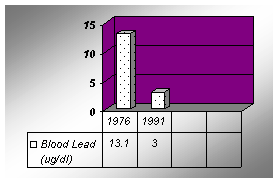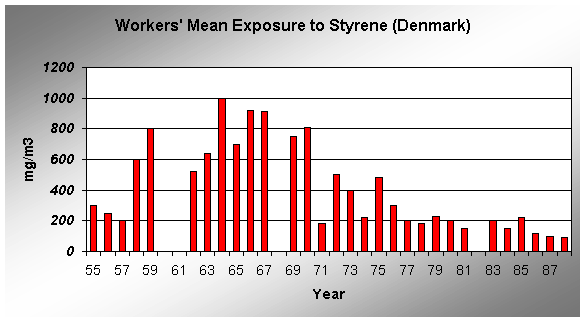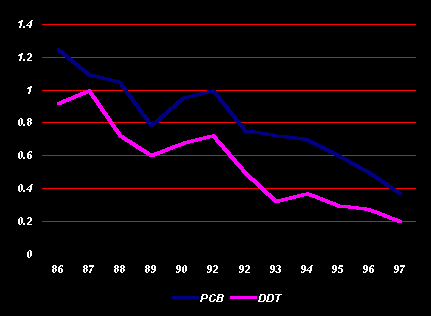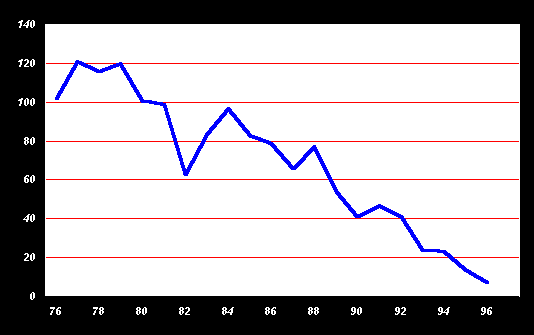In Post-Industrial Countries, What Is the Current Status of Our Environment Compared to 25 Years Ago?
Occupational and environmental exposures change with time. The history of technology and the history of regulations are important dimensions in the Haz-Map database. Because of prevention, many occupational diseases of the past are no longer seen, or they are seen only in workers who were exposed in earlier decades.
ACTION |
RESULTS |
In the 1970s many universities began offering courses in ecology for the first time. People became concerned about the environment, and they were determined to do something about it. We are learning how to moderate technology and how to create new technology that will be sustainable in the long term.
SOME IMPORTANT ENVIRONMENTAL LAWS PASSED OR AMENDED BETWEEN 1969 AND 1980 (US)Federal Insecticide, Fungicide & Rodenticide Act (FIFRA), 1948, 1972, 1975 National Environmental Policy Act (NEPA), 1969 Federal Coal Mine Safety and Health Act (MSHA), 1969 Occupational Safety and Health Act (OSHA), 1970 Clean Air Act (CAA), 1970 Safe Drinking Water Act (SDWA), 1974, 1979 Toxic Substances Control Act (TSCA), 1976 Comprehensive Environmental Response, Compensation & Liability Act (CERCLA), 1980 These laws restricted the use of hundreds of chemicals:
Hazardous Substance Banned 1972-1991 (US)All agricultural uses of DDT--1972 Thallium rodenticides --1972 Most uses of aldrin & dieldrin --1974 Production of benzidine for commercial sale --1974 Asbestos in insulation materials --1975 Leaded gasoline in new vehicles --1975 Most uses of mirex --1977 Production of PCBs --1977 Sale of lead-based paint to consumers --1978 Most uses of BHC, chlordane and heptachlor --1978 All uses of chlordane --1988 Use of mercury in exterior paints --1991 |
|
References
Picture of "Silent Spring" book from Rachel Carson Homestead.
Picture of water from EPA. See the 25th Anniversary Summary Report.
Environmental Laws: see "Historical Perspective" by Jacqueline Karnell Corn in Harber.
Banned Hazardous Substances: see Last JM, Wallace RB, Gunther R, eds. Marcy-Rosenau-Last Public Health & Preventive Medicine, 13 ed., Appleton & Lange, 1992, p. 488.
Kirkwood RC, Longley AJ, eds. Clean Technology and the Environment. Blackie Academic & Professional, London, 1995, p.113.
See the NIOSH web page about the drop in blood leads that occurred between two national surveys of the U.S. population.
Symanski E, Kupper LL, Rappaport SM. Comprehensive evaluation of long term trends in occupational exposure: part 1. Description of the database. Occup Environ Med 1998;55:300-309.
Jensen AA, Breum NO, Bacher J, Lynge E. Occupational exposures to styrene in Denmark 1955-88. Am J Ind Med 1990;17(5):593-606.
Schade G, Heinzow B. Organochlorine pesticides and polychlorinated biphenyls in human milk of mothers living in northern Germany: Current extent of contamination, time trend from 1986 to 1997 and factors that influence the levels of contamination. Sci Total Environ 1998;215:31-39.
Web site for AQMD, the air pollution control agency for the four-county region including Los Angeles.
What does sustainable development have to do with maturity? Will humanity emerge from it's adolescent stage? See this article on the EcoIQ web site.
Revised May 30, 2018

 "In
the highly industrialised western countries we are approaching the point where the gross,
visible, pollution of rivers and estuaries has either already been eliminated or is within
sight of being properly controlled." 6
"In
the highly industrialised western countries we are approaching the point where the gross,
visible, pollution of rivers and estuaries has either already been eliminated or is within
sight of being properly controlled." 6



